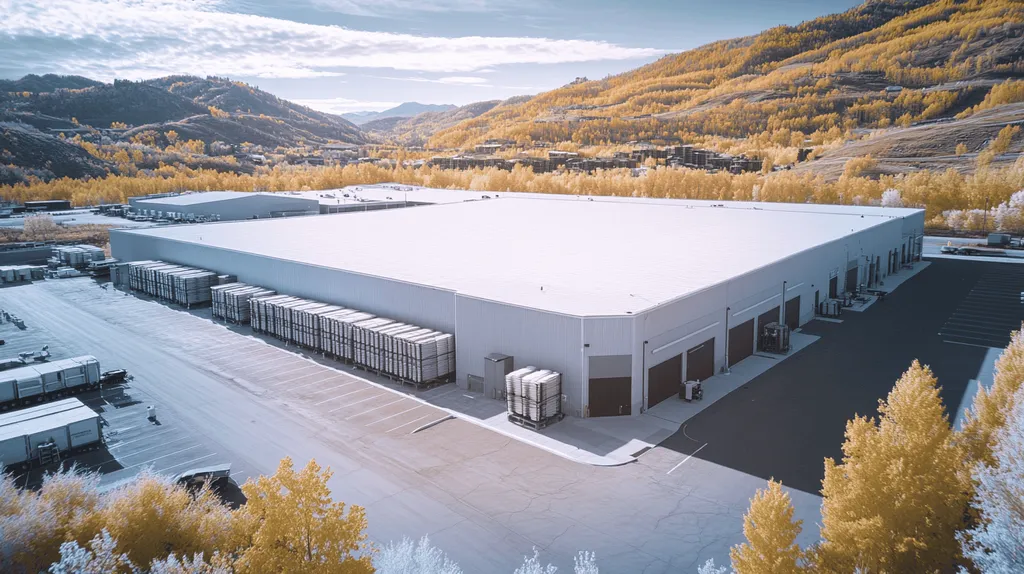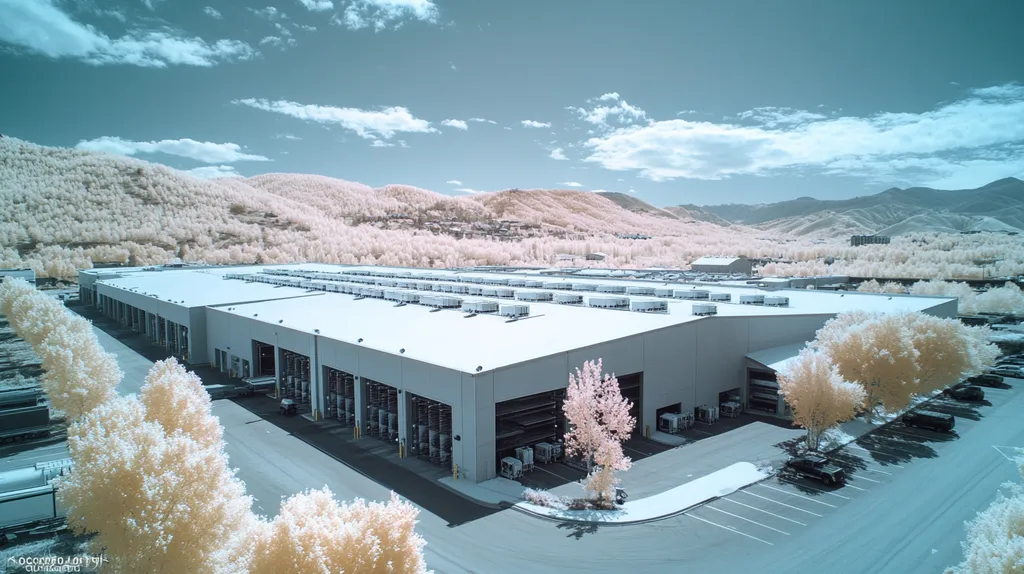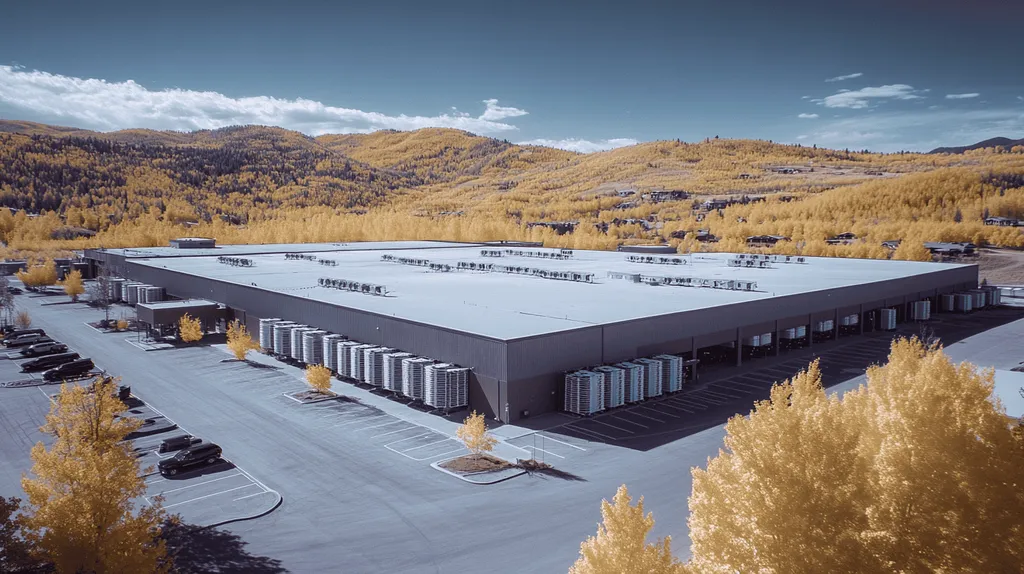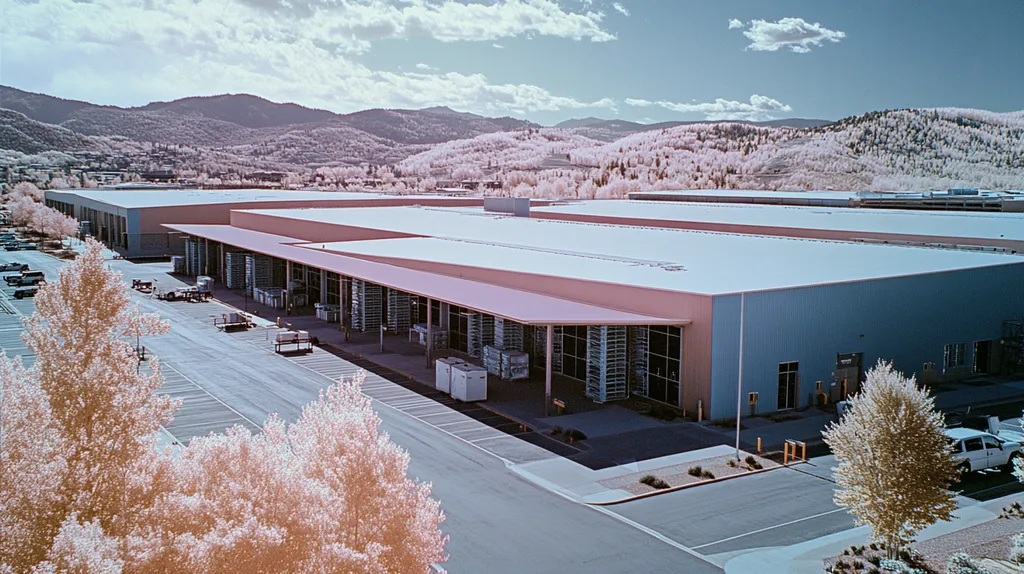Welcome to today’s Battle Royale featuring two roofing heavyweights: “TPO” in the east corner versus “EPDM” in the west!
Tonight’s showdown pits these contenders against each other across six punishing rounds designed to test every aspect of their performance for Climate Effects on Commercial Roof Lifespan.
At stake? Millions in potential costs, decades of building protection, and the critical performance demands of modern commercial and industrial facilities.
Our professional judging panel will evaluate each round on technical merit, real-world performance, and value delivery. After all six rounds, we’ll declare our ultimate champion.
Ladies and gentlemen, facility managers and building owners… it’s time to rumble!
ROUND 1: INITIAL COSTS & INSTALLATION
In today’s volatile climate conditions, selecting the right commercial roofing system has become more critical than ever. The initial investment in TPO or EPDM roofing materials can impact a building’s performance and operational costs for decades. Understanding the nuances of material costs, installation requirements, and project timelines is essential for making an informed decision that will withstand increasingly extreme weather patterns.
Material Expenses
The upfront cost comparison between TPO and EPDM reveals significant differences in initial investment. TPO materials typically cost 15-20% more per square foot than EPDM, primarily due to their advanced manufacturing process and enhanced UV-resistant properties.
EPDM’s lower material costs make it an attractive option for projects with tight budgets. The simplified composition and established manufacturing processes keep production costs down, resulting in more competitive pricing.
However, TPO’s superior energy reflection properties can offset its higher initial cost through reduced cooling expenses. In warmer climates, these savings can accumulate significantly over time.
For material expenses, EPDM holds the ADVANTAGE due to its lower upfront costs and proven value proposition.
Installation Complexity
Installation quality significantly impacts how long a commercial roof will remain effective, with poor installation potentially reducing roof lifespan by up to 20%. TPO roofs require precise heat-welding techniques, demanding specialized training and equipment for proper installation. (source: Burrage Roofing)
EPDM installation utilizes straightforward adhesive application methods that most roofing contractors can perform effectively. The simpler installation process reduces the likelihood of installation errors and subsequent performance issues.
TPO’s more complex installation requirements often limit the pool of qualified contractors, potentially increasing costs and scheduling difficulties. Meanwhile, EPDM’s wider contractor availability typically ensures more competitive bidding and flexible scheduling options.
Due to its simpler installation requirements and broader contractor availability, EPDM claims the ADVANTAGE in installation complexity.
Project Timeline
Project duration directly impacts business operations and overall installation costs. TPO installations typically require 25-30% more time than EPDM due to the precise welding requirements and weather-dependent installation conditions.
EPDM installations can progress more rapidly due to simpler application methods and fewer weather restrictions. This efficiency translates to reduced labor costs and minimal business disruption.
The weather sensitivity of TPO installation can lead to unexpected delays, particularly in regions with variable climate conditions. EPDM’s more forgiving installation requirements help maintain consistent project timelines.
EPDM earns the ADVANTAGE for project timeline due to its faster installation process and reduced weather sensitivity.
ROUND 1 WINNER: EPDM
ROUND 2: DURABILITY & LIFESPAN
As climate patterns become more extreme, the durability and longevity of commercial roofing systems face unprecedented challenges. The choice between TPO and EPDM can mean the difference between a roof that withstands increasingly severe weather conditions and one that requires premature replacement.
Increasing temperatures and extreme weather events are dramatically accelerating the deterioration of commercial roofs, making material selection more critical than ever. Understanding how these systems perform under stress is essential for protecting long-term building investments. (source: Roof Crafters)
Weather Resistance
TPO’s advanced UV-resistant properties and heat-welded seams provide excellent protection against solar radiation and high temperatures. Its reflective surface helps minimize thermal stress and prevents premature aging caused by excessive heat absorption.
EPDM demonstrates exceptional resilience in extreme temperature fluctuations due to its natural flexibility and elasticity. The material’s ability to expand and contract without compromising structural integrity makes it particularly effective in regions with dramatic temperature swings.
While both materials offer strong weather resistance, EPDM’s proven track record in extreme conditions and superior flexibility gives it the ADVANTAGE in this category.
Maintenance Requirements
TPO roofs require regular inspections and periodic cleaning to maintain their reflective properties. The membrane’s white surface can show dirt accumulation more readily, necessitating more frequent cleaning to maintain energy efficiency.
EPDM’s darker surface naturally conceals dirt and requires minimal cleaning to maintain functionality. Its simple composition means fewer components that could potentially fail or require maintenance over time.
The straightforward maintenance needs and lower upkeep costs of EPDM earn it the clear ADVANTAGE in maintenance requirements.
Life Expectancy
TPO roofing systems typically last 15-20 years when properly installed and maintained. Their performance can vary significantly based on local climate conditions and exposure to environmental stressors.
EPDM installations routinely achieve 25-30 year lifespans, with some systems lasting even longer in moderate climates. The material’s proven longevity across diverse environmental conditions demonstrates its reliability as a long-term roofing solution.
With a significantly longer average lifespan, EPDM claims the ADVANTAGE in life expectancy.
ROUND 2 WINNER: EPDM
ROUND 3: PERFORMANCE FACTORS
In today’s era of climate volatility, the performance capabilities of commercial roofing materials face unprecedented challenges. Rising temperatures, increased storm intensity, and extreme weather fluctuations put immense stress on roofing systems. Understanding how TPO and EPDM perform under these conditions is crucial for making informed investment decisions.
Durability Under Extreme Weather
Climate resilience has become the defining factor in roofing performance. TPO’s advanced chemical formulation and heat-welded seams create a remarkably durable barrier against severe weather conditions.
TPO membranes maintain their structural integrity even under intense UV exposure and temperature extremes. Their reflective surface helps prevent heat-related degradation, while the reinforced composition resists impact damage from hail and debris.
EPDM’s rubber-based composition offers excellent flexibility and freeze-thaw resistance. However, its dark surface absorbs more heat, potentially accelerating aging in hot climates.
TPO’s superior resistance to UV damage and extreme temperatures earns it the ADVANTAGE in weather durability.
Thermal Performance and Energy Efficiency
Single-ply roofing systems vary significantly in their thermal performance capabilities. TPO’s highly reflective surface dramatically reduces heat absorption, leading to decreased cooling costs and improved building efficiency. (source: Commercial Roofing Mobile AL)
The white surface of TPO membranes reflects up to 85% of solar radiation, maintaining cooler roof temperatures even during peak summer conditions. This reflection capability remains effective throughout the membrane’s lifespan.
EPDM’s dark coloration absorbs more solar heat, which can increase cooling demands and energy costs. While white EPDM options exist, they typically don’t match TPO’s reflective properties.
TPO claims the ADVANTAGE in thermal performance due to its superior reflective properties.
Resistance to Punctures and Abrasion
Daily wear and tear can significantly impact roofing performance. TPO membranes feature reinforced construction that provides excellent puncture resistance and durability against foot traffic.
The heat-welded seams in TPO systems create stronger bonds than adhesive-based connections, reducing vulnerability to separation and damage. This strength is particularly valuable in areas with high maintenance requirements.
EPDM systems, while durable, can be more susceptible to punctures and tears. Their adhesive-based seams may require more frequent inspection and maintenance to prevent separation.
TPO’s superior puncture resistance and stronger seam construction give it the ADVANTAGE in this category.
ROUND 3 WINNER: TPO
ROUND 4: MAINTENANCE REQUIREMENTS
In today’s challenging climate conditions, proper maintenance can mean the difference between a commercial roof lasting its full expected lifespan or failing prematurely. Rising temperatures, increased storm intensity, and extreme weather fluctuations demand vigilant upkeep strategies for both TPO and EPDM systems.
Understanding the specific maintenance requirements of each roofing system is crucial as climate patterns continue to become more unpredictable. The wrong maintenance approach can accelerate deterioration and lead to costly repairs or premature replacement.
Regular Inspection Requirements
TPO roofing systems require quarterly professional inspections to maintain their protective capabilities. These inspections focus on seam integrity, surface wear patterns, and drainage system functionality.
EPDM systems need bi-annual professional inspections with emphasis on checking for surface cracks, ponding water, and membrane separation. The rubber-based material requires specific expertise to identify early signs of degradation.
One of the most significant factors impacting inspection frequency is the local climate, with harsh sunlight and high temperatures accelerating the degradation of both materials. In areas with extreme weather, some roofing materials can crack and deteriorate more rapidly, requiring additional monitoring. (source: Decra)
With less frequent inspection requirements and simpler evaluation protocols, TPO claims the ADVANTAGE in this category.
Routine Maintenance Tasks
TPO maintenance primarily involves surface cleaning to maintain reflective properties and debris removal to prevent drainage issues. The material’s smooth surface makes these tasks relatively straightforward and less time-consuming.
EPDM requires more intensive maintenance, including regular resealing of seams and application of protective coatings. The material’s texture tends to trap more debris, necessitating more frequent cleaning.
Both systems require careful attention to drainage systems and flashings, but EPDM’s greater vulnerability to UV damage means more frequent protective treatments.
TPO’s lower maintenance intensity and simpler care requirements give it the ADVANTAGE in routine maintenance.
Long-term Care Costs
TPO’s maintenance costs remain relatively stable throughout its lifespan, with predictable cleaning and inspection expenses. The material’s resistance to environmental damage helps minimize unexpected repair costs.
EPDM maintenance costs tend to increase as the membrane ages, particularly in regions with extreme temperature fluctuations. The need for periodic resealing and protective coatings adds to long-term maintenance expenses.
While both systems require ongoing investment in maintenance, EPDM’s higher frequency of specialized treatments and repairs results in greater long-term costs.
TPO earns the ADVANTAGE for more predictable and lower long-term maintenance costs.
ROUND 4 WINNER: TPO
ROUND 5: SUSTAINABILITY CREDENTIALS
As climate concerns intensify, the environmental impact of commercial roofing choices has become a critical business consideration. Rising temperatures and stricter environmental regulations are forcing property owners to evaluate roofing materials not just for durability, but for their overall sustainability footprint.
The stakes are particularly high as municipalities implement new environmental building codes and carbon reduction targets. Understanding how TPO and EPDM align with these emerging standards can significantly impact both compliance costs and property values.
Environmental Impact
Manufacturing processes and material composition significantly influence environmental impact. TPO production requires more energy and chemical processes, but results in a product with superior UV reflection properties that reduce building energy consumption.
EPDM’s simpler manufacturing process has a lower initial carbon footprint. However, its dark surface typically leads to increased cooling demands throughout the building’s lifecycle, potentially offsetting the manufacturing advantages.
Recent advances in TPO technology have improved its environmental profile while maintaining performance benefits. The material’s ability to reduce cooling loads and associated carbon emissions gives it a clear edge in environmental impact.
TPO claims the ADVANTAGE in environmental impact due to its superior lifecycle performance.
Recyclability
The end-of-life disposal of roofing materials has become increasingly important as landfill space decreases. TPO membranes can be fully recycled into new roofing products, with established programs already processing significant volumes.
EPDM recycling capabilities exist but face more limitations. While the material can be repurposed, fewer facilities accept it and processing costs are generally higher.
TPO’s more comprehensive recycling infrastructure and lower processing costs make it increasingly attractive for environmentally conscious property owners.
TPO earns the ADVANTAGE in recyclability due to its superior end-of-life options.
Energy Performance
TPO’s high UV resistance and reflective properties significantly reduce roof surface temperatures, leading to decreased cooling costs and extended material lifespan. The white surface maintains most of its reflective properties even as it ages, continuing to provide energy benefits throughout its service life. (source: Burrage Roofing)
EPDM’s dark color absorbs more solar radiation, which can increase cooling demands by up to 25% compared to reflective surfaces. While white EPDM options exist, they typically don’t match TPO’s long-term reflective performance.
The energy savings from TPO’s reflective properties become particularly significant in warmer climates and urban heat islands. These benefits compound over time, resulting in substantial operational cost reductions.
TPO claims the ADVANTAGE in energy performance due to superior reflective properties.
ROUND 5 WINNER: TPO
ROUND 6: SPECIALIZED APPLICATIONS
As climate patterns become increasingly unpredictable, specialized roofing applications face unprecedented challenges. Commercial properties must contend with more frequent temperature extremes, intense UV exposure, and variable moisture conditions that can dramatically impact roof performance.
The stakes are particularly high for buildings with unique architectural features or specific operational requirements. Making the wrong material choice for these specialized applications can lead to premature system failure and expensive remediation.
Performance in Extreme Temperatures
Rising temperatures and extreme weather create unprecedented thermal stress on commercial roofing systems. TPO’s advanced formulation provides excellent heat resistance, with its reflective surface helping to maintain stable roof temperatures even during intense heat waves.
EPDM demonstrates superior flexibility in cold conditions, maintaining its elasticity even in sub-zero temperatures. This characteristic makes it particularly effective in regions experiencing severe winter conditions and dramatic freeze-thaw cycles.
However, EPDM’s dark surface can absorb significant heat in warmer months, potentially accelerating material degradation and increasing cooling costs. Rising temperatures and extreme weather increase thermal stress on roofing materials, causing cracks, splits, and accelerated aging. (source: RoofCrafters)
TPO claims the ADVANTAGE in temperature performance due to its superior heat management capabilities.
Chemical and Environmental Resistance
Industrial emissions, acid rain, and environmental pollutants pose significant threats to roofing integrity. TPO’s advanced chemical formulation provides excellent resistance to common industrial chemicals and environmental contaminants.
The material’s non-porous surface prevents chemical absorption and makes decontamination simpler. This characteristic is particularly valuable in industrial areas or locations with high pollution levels.
EPDM offers good general chemical resistance but may require additional protective coatings in harsh industrial environments. Its porous surface can potentially trap contaminants, making thorough cleaning more challenging.
TPO earns the ADVANTAGE in chemical resistance due to its superior protection against industrial contaminants.
Complex Installation Requirements
Specialized applications often involve unusual angles, multiple penetrations, or complex equipment mounting requirements. TPO’s heat-welded seams provide excellent flexibility for custom detailing around complex roof features.
The material’s rigidity and strength make it ideal for supporting heavy equipment installations. TPO’s precise installation requirements ensure reliable performance even in challenging configurations.
EPDM’s flexibility allows for easy conforming to irregular shapes, but its adhesive-based seams may require additional reinforcement in complex installations. The material’s stretching capability can be both an advantage and limitation in specialized applications.
TPO claims the ADVANTAGE in complex installations due to its superior seam strength and detailed finishing capabilities.
ROUND 6 WINNER: TPO
AND THE WINNER IS…
After six grueling rounds of technical evaluation, we have our verdict! With four rounds to two, TPO emerges as our undisputed champion in this climate-focused showdown!
TPO dominated the later rounds with superior performance in maintenance, sustainability, and specialized applications. Its advanced UV resistance, exceptional chemical durability, and superior energy efficiency proved decisive in today’s increasingly extreme climate conditions.
But don’t count EPDM out! This veteran contender showed incredible strength in the early rounds, particularly in installation ease and initial cost-effectiveness. For buildings in colder climates or projects with tight budgets, EPDM remains a formidable choice.
Important Ringside Notice:
Every building faces unique challenges based on local climate conditions, structural requirements, and operational demands. While TPO claims today’s victory, individual results may vary significantly. Property owners should always consult qualified roofing professionals who can evaluate specific building conditions, local weather patterns, and long-term performance requirements before making their final selection.
Ladies and gentlemen, in the high-stakes arena of commercial roofing, there’s no substitute for matching your building’s specific needs to the right contender’s strengths. Choose wisely – your building’s future performance depends on it!
FREQUENTLY ASKED QUESTIONS
Q. How do costs differ between TPO and EPDM commercial roof systems?
A. TPO materials generally cost 15-20% more per square foot compared to EPDM. While EPDM offers lower initial costs, TPO’s energy efficiency can balance higher upfront investments over time.
Q. Which commercial roof has better durability and lifespan?
A. EPDM roofs typically last 25-30 years, outperforming TPO roofs, which last about 15-20 years. EPDM’s flexibility and resistance make it ideal for long-term durability in harsh climates.
Q. How does climate affect the performance of commercial roofs?
A. Extreme temperatures, UV exposure, and unpredictable weather can damage roofing materials. Both TPO and EPDM have unique strengths, but TPO generally performs better under high heat and UV exposure, while EPDM excels in cold climates.
Q. What are the maintenance requirements for TPO and EPDM commercial roofs?
A. TPO requires quarterly inspections and surface cleaning for optimal performance. In contrast, EPDM needs bi-annual inspections and more intensive maintenance to manage its unique vulnerabilities to UV damage and debris accumulation.
Q. Which commercial roof option is more sustainable over time?
A. TPO is generally more sustainable due to its recycling capabilities and energy-efficient properties. Its manufacturing processes also show a smaller carbon footprint, making it a better choice for environmentally-conscious owners.
Q. How do TPO and EPDM perform in specialized applications?
A. TPO excels in specialized applications due to its strong seams and heat-welded connections, ideal for complex roofs. EPDM offers flexibility but may require additional reinforcement in challenging conditions.
Q. Can both TPO and EPDM roofs be installed in extreme climates?
A. Yes, TPO and EPDM can be installed in extreme climates; however, the choice depends on local conditions. TPO is preferred in hot regions, while EPDM performs better in cold environments due to its elasticity.










